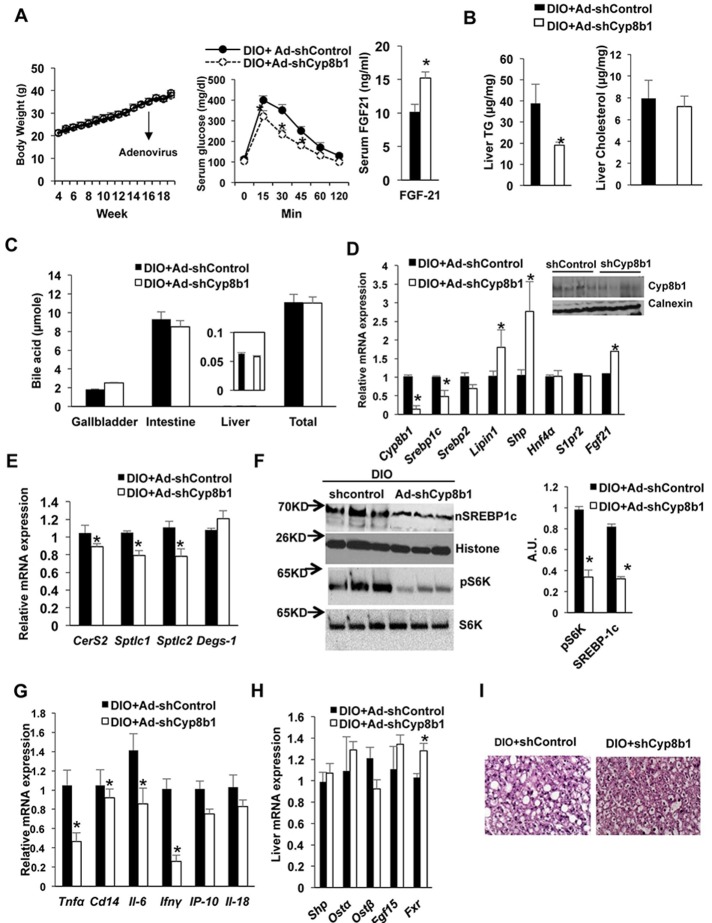Figure 7.
Mechanism of CYP8B1 activation of ceramide/mTOR/SREBP-1C signaling. CYP8B1 increases TCA, which is converted to DCA by gut microbiota. In the intestine, TDCA activates intestinal FXR to induce ceramides and FGF15 synthesis. CYP8b1 activates mTORC1 by two mechanisms. First, ceramides synthesized in enterocytes are secreted into blood circulation to activate the mTORC1-S6K pathway in hepatocytes to induce SREBP-1C-mediated hepatic lipogenesis. Second, TCA/TDCA induces intestinal FGF15 to activate hepatic FGFR4 to activate mTORC1. mTORC1 activates ERK1/2 signaling via pS6K. Activation of ERK1/2 may serve as a negative mechanism to inhibit CYP8B1. Therefore, CA and DCA modulate mTORC1 signaling and insulin signaling and lipogenesis in hepatocytes to maintain lipid homeostasis. Bile acids inhibit PPARα, which induces FGF21 as a fasting response. FGF21 inhibits mTORC1 through increased adiponectin secretion from adipose tissue and increase hepatic AKT/insulin sensitivity. CYP8B1 inhibits hepatic synthesis of FGF21, which inhibits mTORC1 signaling, and results in activation of mTORC1 signaling.

